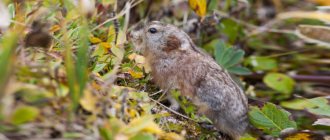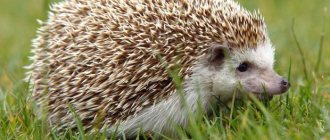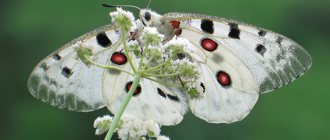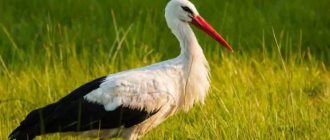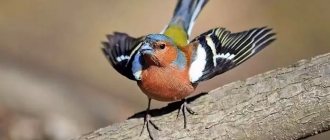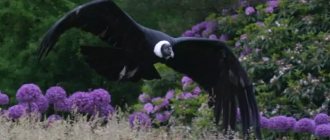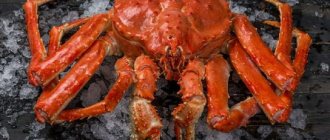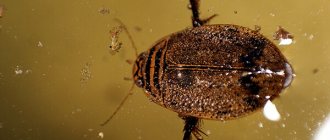A message about lemmings - small fluffy animals dressed in a fur coat of a specific color, with the help of which they perfectly camouflage themselves in nature from prying eyes, is presented in this article. They belong to the class of mammals.
Lemming lives alone, he is not afraid of the cold and feels great even in winter weather. This is an active animal leading an isolated lifestyle. The information will reveal interesting facts from the life of the inhabitants of the tundra, and will also introduce a description of each species.
What does a lemming look like?
The body usually does not exceed 15 cm in length.
It is wrapped in thick and soft brown fur, which is strewn with yellow spots on top.
The tail of the field rodent is only 1.8-2.6 cm in length, and the animal itself weighs up to 112 g. In winter, the animal does not hibernate.
All summer it is busy accumulating food reserves, which it hides in earthen crevices.
When cold weather sets in and snow falls, the lemming digs tunnels in the snow and looks for hidden food.
The animals are very prolific. They reach sexual maturity after 2 months.
The female can produce 3-4 broods per year, and each litter consists of 5-6 cubs.
Sometimes lemmings are forced to leave their habitats if there is a shortage of food. Rodents gather in whole streams and begin to look for a new habitat.
Lemming character and lifestyle
This small animal is a poor companion. Lemmings are naturally given a rather quarrelsome character. They do not particularly welcome the presence of their own relatives near them and even often start fights.
The lemming prefers to live alone. Parental feelings are not very developed in him either. Males, immediately after fulfilling the sacred duty of procreation, go in search of food, leaving the female with the offspring.
They are too aggressive towards the appearance of a person. When meeting, this animal jumps on a person, whistles menacingly, rises on its hind legs, sits firmly on its shaggy, lush backside and begins to scare, waving its front legs.
They can grab the outstretched hand of an overly annoying “guest” with their teeth, in other words, they show their antipathy in every possible way. And yet, he fails to intimidate a serious animal for which the lemming is a tasty morsel. Therefore, more reliable protection for this baby is its own hole or a dense layer of snow.
Some types of lemmings (for example, forest lemmings) prefer not to be seen by anyone at all. Despite the fact that they come out of their passages several times a day, it is extremely difficult to see them, and even more so, to capture a lemming in a photo . This animal is very careful and comes out only at dusk or at night.
Lemmine g has several species and among themselves these species differ in their habitat and, as a result, in different diets and lifestyles. Russia is home to forest, Norwegian, Amur, hoofed and Siberian lemmings , as well as Vinogradov’s lemming. In both summer and winter, the animals lead an active lifestyle and do not hibernate in the winter.
Types of lemmings in Russia
Northern pieds are the name given to these mammals by the inhabitants of the Russian tundra. It is in these latitudes that rodents are found.
In Russia, the lemming population is represented by 6 species.
Forest representative
has a blackish-gray coat with a rusty-brown marking on its back. The animals live in Mongolia, Kamchatka and are even found near Scandinavia.
A place of residence is chosen with a lot of moss. Usually these are coniferous and mixed forests. In some regions of Russia this species is listed in the Red Book;
Norwegian lemmings
covered with mottled fur. There is a black spot on the head and neck, and a dark stripe is visible along the ridge. Body brownish-yellow.
The animal lives in the mountain tundra, and from time to time moves to the taiga. Norwegian rodents do not create burrows on their own. They prefer to settle in natural shelters. In addition to moss, this species feeds on cereals, moss, wild berries and sedge;
Siberian variety
The animal is distinguished by yellow fur with a red tint, with a black stripe along the ridge. The color remains the same throughout the year.
Prefers areas with lots of green moss, sedge and cotton grass. Siberian lemmings are also found in the Russian tundra;
Amur species
has a short tail. The lemming is distinguished by the peculiarity of a short inner toe with a nail-like claw and a fleecy sole. In summer there is a seasonal change in color.
The animal is uniformly colored brown with a characteristic black path along the ridge. At the head, the stripe widens and turns into a spot. The rest of the fur is rusty-red. In winter, the fur of the Amur rodent darkens and lengthens, and the dark stripe sometimes disappears;
Hoofed lemming
has a gray coat with red tints. In winter this view changes. It turns white.
The two claws located on the front paws grow greatly in cold weather;
Lemming Vinogradova
- the largest species of rodent. The gray fur has a chestnut tint and small cream spots.
On the sacrum you can see a black strap that encircles the entire back. In winter, the lemming molts and turns white.
Option 2
Lemming is a small mammal from the rodent family. Their close relatives are voles and hamsters. Lemmings have 4 genera, each of which is internally divided into several species.
The body of the animal is dense, not exceeding 15 cm in length, 2 of which are the tail. The lemming is covered with thick fur, which is due to its life in the harsh climatic conditions of the tundra and forest-tundra of Eurasia and North America. The color of its skin is brown or variegated, monochromatic. In winter, some species have lighter or whiter fur. The animal's ears are hidden under the fur, which makes them almost invisible. The animal’s paws are short, its claws can grow greatly, taking on the shape of a “hoof.” Due to its external resemblance to steppe pieds, the lemming received its second name - polar pieds.
Lemmings lead a solitary lifestyle, sometimes gathering in small groups in winter. The animals do not hibernate; they are active throughout the year. Rodents live in burrows that they dig in soft soil. Some species live under roots and snags. Despite the fact that lemmings are prone to solitary existence, they do not have strict territorial boundaries. Therefore, the animals move freely in search of food.
The main food of lemmings are tundra plants such as reindeer moss, dwarf birch catkins, and roots. In search of food, animals are able to make small seasonal migrations, during which the population size can decrease significantly. This happens mainly because in open areas the animal becomes easy prey for predators.
The lifespan of rodents under favorable conditions is 1.5 – 2 years. The female takes care of the offspring. Lemming cubs are born blind and helpless, but they grow quite quickly. Already at the age of 3-4 weeks they begin to lead an independent existence.
The role of lemmings in the population size of predatory animals, such as the polar owl, arctic fox, and ermine, is great, since rodents are their main food. When the number of lemmings decreases, predators have to move to other areas in search of food.
Lifestyle
Small rodents like to travel alone. They live in makeshift burrows. There are species that inhabit natural refuges.
Active lemmings do not sleep in winter. They tolerate cold well. In summer, the animal searches for food, which it hides in the ground. In winter, with their paws, they dig tunnels in the thick snow, in search of hidden food, and thus spend the winter.
Lemmings gather in groups only during mass migrations. This happens from time to time when the inhabited areas run out of food. Then they are forced to migrate in search of lands richer in food. During the relocation, many animals die. Losses in numbers are quickly restored due to the high fertility of females.
Popular message topics
- Scientists of Russia
Many scientists who made a huge contribution to the development of humanity were from Russia. Probably, the greatest scientist in the world can be called Dmitry Ivanovich Mendeleev, the creator of the periodic table of chemical elements. - Genetics Genetics
as a science originated in the 19th century, its discoverer was Gregory Mendel. He revealed to the whole world the discreteness (separateness) of hereditary factors. He proved that in the structure of every living organism there are so-called genes - Ussuri Nature Reserve
In the Primorsky Territory, not far from the city of Ussuriysk, the famous Ussuri Nature Reserve is located. Huge, diverse forests occupy a large area here, which are perfectly complemented by high mountains and rivers flowing nearby.
What do lemmings eat?
Lemmings are not insectivorous animals.
The main food of rodents is vegetation.
They prefer:
- shrubs;
- green moss;
- foliage;
- young branches of willow and birch;
- sedge;
- reindeer moss.
They don’t disdain berries either. During the warm season, they love to eat blueberries, blueberries and cloudberries.
In winter, lemmings eat their reserves, which they hide in the ground since the summer, or look for various roots.
Nutrition
It is interesting that such small animals are extremely voracious. During the day, they absorb so much food that its weight exceeds their own weight, sometimes twice as much. And if you calculate the mass of the annual amount of plant food they consume, it reaches and sometimes even gains 50 kg.
At the same time, the animals’ menu of such products consists of, for example, berries, moss, fresh grass, young shoots of a wide variety of northern plants, shrubs and trees. Having eaten everything around one area, they move further in search of new food sources. In the summer, insects can also serve as a treat for them.
Lemmings can almost completely chew off the shed antlers of deer.
Trying to replenish the energy reserves in its small body (and living creatures always lack them in harsh areas), the lemming rodent is forced to consume very unusual types of food. In particular, deer antlers, which such animals are known to shed every year, and lemmings sometimes gnaw them off, leaving not even a small residue.
In search of food, such animals are able to overcome any obstacles, cross water bodies and climb into human settlements. Often such gluttony ends tragically for them. Lemmings die, crushed on the roads by cars, and drown in the water.
Habitat
The furry rodents live in North American and Eurasian forest-tundras. Sometimes they can be found on the islands of the Arctic Ocean, off the Arctic coast.
Lemmings are native to the New Siberian Islands and Wrangel Island.
These are also the original inhabitants of Novaya and Severnaya Zemlya.
In Russia, the home territory of the mouse-like animal extends from the Kola Peninsula to Chukotka and the lands of the Far East.
The vole's natural habitat is wet, marshy areas. They do not like sudden temperature fluctuations or too warm weather, as they are prone to overheating.
Description and features
Lemmings are small mammals classified by zoologists as members of the hamster family. In appearance and size they really resemble their named relatives. In fact, under the name “ lemming ” it is customary to unite several groups of animals that are closely related to each other and belong to the order of rodents from the subfamily of voles.
The fur of these representatives of the animal world is of medium length, thick, can be brown-gray in color, monochromatic, and in some cases is variegated in color. Such animals look very well-fed and dense. The fur on their head, slightly elongated in shape, completely covers their small ears.
And on other parts of the body, the fur turns out to be so overgrown and dense that it even hides the soles of the paws of some varieties. On the blunt-shaped muzzle, beady eyes stand out. The legs of these creatures are very short, the tail is usually no more than 2 cm long.
The lemming is an animal of the tundra and other northern zones similar in climate: forest-tundra and Arctic islands, and therefore in a number of species the hair color noticeably brightens in winter and even acquires a white color to match the color of the surrounding snowy landscapes. Such animals are found in the cold regions of Eurasia and in the snowy territories of the American continent.
Economic importance
Parsleys are the main food for many fur-bearing animals.
living in the tundra. This is their main and important purpose in the world around them.
Their habit of digging is a valuable asset for soil in permafrost conditions. They accelerate the thawing of the upper layers of the earth and contribute to the formation of soil in the tundra.
Due to high fertility, the fresh soil of the tundra is abundantly fertilized with nutrients. This speeds up the growth of vegetation in poor soil.
During periods of active breeding in the forests, the number of foxes, arctic foxes, and skuas increases sharply. Due to the fact that these predators are switching en masse to lemmings, the population of birds and hares in the tundra is also increasing.
List of tundra inhabitants
Arctic fox
This animal is often called the polar fox. This is a monogamous predatory animal that lives in a family for the period of raising offspring, and then alone. The animal's white fur provides excellent camouflage in the snowy tundra. The Arctic fox is an omnivore, eating both plant and animal food.
Reindeer
A powerful animal adapted for life in the cold, long winter. It has thick fur and large branched antlers, which the deer changes annually. They live in herds and roam the tundra. In winter, the deer’s diet most often consists of moss lichen; such meager food forces the animal to seek sea water to replenish its mineral reserves. Deer loves grass, berries and mushrooms.
Lemming
Famous small rodents of the tundra that feed on most carnivorous animals. The rodent loves leaves, seeds and roots of trees. This animal does not hibernate in winter, so it specially hides food reserves in the summer and digs them up in the winter. If there is not enough food, rodents have to organize a mass relocation to another territory. Lemmings are very prolific.
Muskox
A unique animal resembling in appearance both bulls and sheep. In Russia, these animals live in nature reserves and are protected. The animal has long and thick hair. Musk oxen see well at night and can find food deep under the snow. They live in herds, the main enemies of the animal are the wolf and the polar bear.
Ptarmigan
Outwardly it resembles a chicken and a pigeon. During the year, the female changes plumage three times, and the male four. This contributes to effective camouflage. The partridge flies poorly; it feeds mainly on plant foods. Before winter, the bird tries to eat worms and insects in order to stock up on fat for the winter.
Gopher
A fluffy small animal with short front legs, which are endowed with sharp claws. Most gophers store food. The cheek pouches help them well in this matter. You can recognize a gopher by a certain whistle with which the animals communicate.
polar Wolf
A subspecies of the common wolf, it is distinguished by white or almost white fur. They live in flocks and are able to travel long distances in search of food. Polar wolves can chase prey at speeds of up to 60 km per hour. They often hunt musk oxen and hares.
Ermine
It is classified as a predator, although at first glance it is a very sweet and kind animal. It has a long body and short legs; in winter it becomes snow-white in color. The stoat feeds on rodents and can also eat eggs, fish and even hares. The animal is included in the Red Book, as it has always been valuable for fur hunters.
Arctic hare
The largest among its brothers. In winter, the polar hare is white in color and feeds on branches and tree bark; in summer it loves grass and legumes. In one summer, a female can bring 2-3 litters.
Interesting facts about lemmings
There is a legend according to which mass suicides occur in lemming populations. They rush into the water to maintain a stable number of animals.
The legend arose due to such an inexplicable phenomenon as the mass migration of rodents. This happens during a period of famine, when there is not enough food for all the animals.
It is curious that the flow of lemmings cannot be stopped. They even go through wide rivers, where, in fact, some of them die. Surviving animals, due to their fertility, quickly restore the size of the family. The information has no scientific confirmation, but the fact remains a fact.
Population and species status
The family of such rodents is considered quite stable in number due to its unique fertility, despite such a short life period. There is absolutely no threat of extinction for these animals, especially since the number of natural predators is regulated naturally, due to the number of lemmings.
Since lemmings lead a secretive lifestyle and often move in search of food, no one will be able to calculate the total number of these animals. According to some data, every 10 years their total number increases. The last few years are considered an exception, when a peak in numbers, although observed, was quite insignificant. Many experts are inclined to assume that recently there has been abnormally warm weather in northern latitudes, which could negatively affect the population of these rodents. Due to the established warm weather, a crust of ice began to form on the surface of the earth instead of the usual layer of soft snow cover. This factor turned out to be decisive, having a negative impact on the total number of such animals.
In fairness, it should be noted that similar declines in the lemming population have been observed before, and more than once. As a rule, time passed and populations returned to their previous course. Such fluctuations are purely cyclical in nature and after each peak, both decrease and increase, there was a period of decline or a period of rise. Such periods are usually associated with the availability of food supply. Similar cycles are typical for 3-5 years. Lemmings feel great in the wild, so it makes no sense to talk about any catastrophic consequences for these animals.

